Navigating the post-operative phase following a dog spaying procedure demands meticulous attention and a tailored approach to ensure the smooth recovery of your canine companion. As veterinary professionals stress the significance of specialized care during this critical period, pet owners are presented with a wealth of expert advice and practical tips to support their dog's healing journey.
From understanding the nuances of post-surgery behavior to creating an optimal environment for recuperation, each aspect of the recovery process contributes significantly to the overall well-being of your good girl. By adhering to vet-recommended guidelines and closely monitoring your dog's progress, you play a pivotal role in facilitating a swift and comfortable recovery.
Key Takeaways
- Spoil your pup and keep her calm for proper healing.
- Monitor incision for any signs of infection or complications.
- Assist with mobility and prevent licking the incision.
- Create a quiet environment to aid your dog's recovery process.
Importance of Dog Spaying
The significance of dog spaying lies in its ability to proactively safeguard against unwanted breeding and potential health complications. By preventing accidental pregnancies, spaying helps control the pet population and reduce the number of dogs in shelters.
This procedure, usually recommended before or shortly after the first heat cycle, also plays a crucial role in preventing health issues such as cancer and uterine infections. Additionally, spaying can deter risky behaviors like escaping to find a mate, which could lead to accidents or injuries.
Dog Spay Recovery Timeline
After understanding the importance of dog spaying in safeguarding against breeding and health risks, it is essential to now explore the timeline of dog spay recovery. Following the surgery, the initial recovery period is crucial, with the process typically lasting 2 or more hours.
Full return to normal activity is expected within 10-14 days post-surgery, although this timeline can vary based on individual factors such as the dog's size, age, and body composition. It is critical to monitor the dog for signs of internal bleeding during this recovery period.
Monitoring Incision for Signs
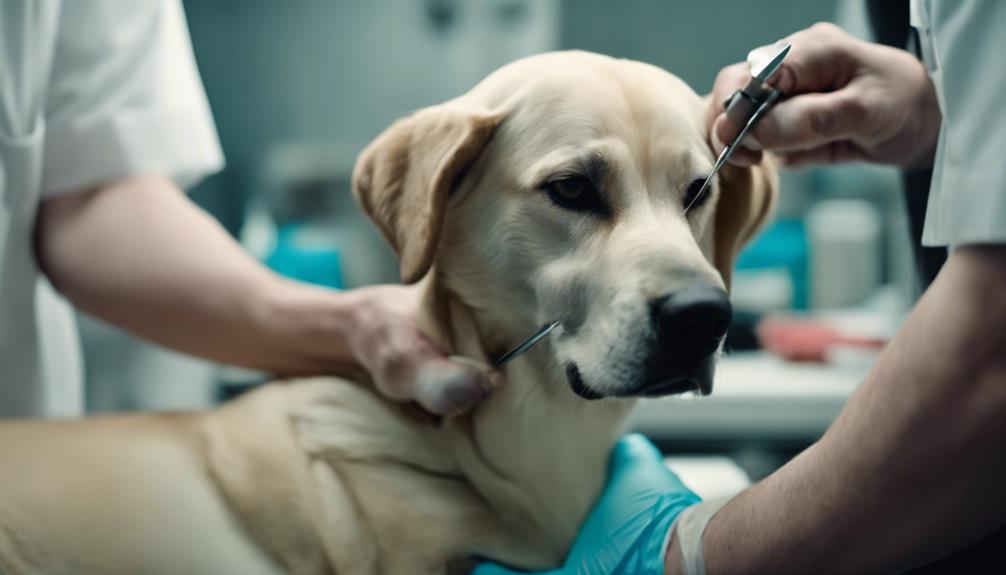
Upon observing your dog's spay incision, vigilance is key to detecting any signs of potential complications. Check the incision site regularly for redness, swelling, bleeding, or discharge, as these may indicate infection or improper healing. Look for any signs of the incision opening up or causing pain to your dog.
Additionally, monitor your dog's behavior for alertness, normal eating habits, and regular bathroom activities. If you notice any abnormal behavior such as lethargy or loss of appetite, contact your veterinarian promptly for further evaluation. Always follow your vet's specific instructions for monitoring and caring for the incision to ensure a smooth recovery process for your furry companion.
Post-Surgery Behavior Observation
When monitoring your dog post-surgery, keen attention to behavioral changes is crucial for ensuring a smooth recovery process and early detection of any potential complications related to the spay procedure. Watch for signs of distress, such as increased agitation, excessive licking or chewing at the incision site, reluctance to eat or drink, or unusual lethargy.
Monitor your dog's alertness, responsiveness, and overall demeanor. Any significant changes in behavior should be promptly reported to your veterinarian. Keep a close eye on your dog's bathroom habits, ensuring they are urinating and defecating normally.
Assistance With Stairs and Walks
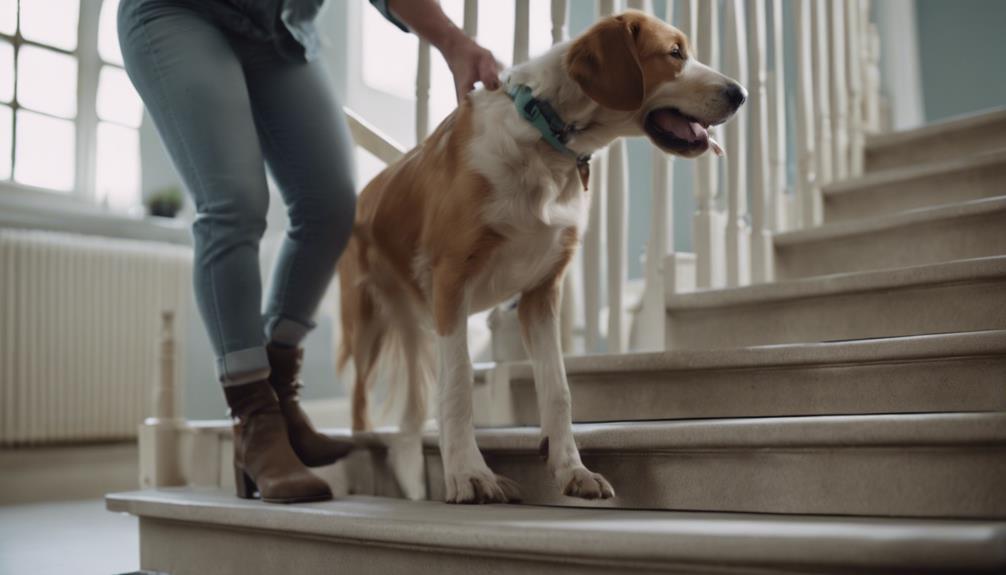
Assisting your dog with stairs and walks is crucial during the recovery period following a spay surgery, ensuring a smooth transition back to normal activity levels. It is essential to support your dog in navigating stairs and limit the duration and intensity of walks to prevent strain on the healing incision. Here are some key tips to assist your furry friend during this crucial recovery phase:
| Assistance with Stairs | Walk Guidelines |
|---|---|
| Support hind end if needed | Limit walks to short, leashed bathroom breaks |
| Use a harness for stability | Avoid running and strenuous exercise |
| Encourage slow, steady movements | Monitor for any signs of discomfort or fatigue |
| Consider ramps for easier access | Gradually increase activity level as advised by the vet |
Using a Cone for Incision Protection
Supporting your dog's recovery after spaying surgery includes utilizing a cone for incision protection to prevent licking or chewing that could hinder the healing process. This is a crucial step in ensuring your furry friend heals properly and quickly.
To help emphasize the importance of using a cone, consider the following emotional bullet points:
- Prevents potential infection risks
- Ensures the incision heals without complications
- Provides peace of mind knowing your dog is protected
Minimizing Interactions With Others
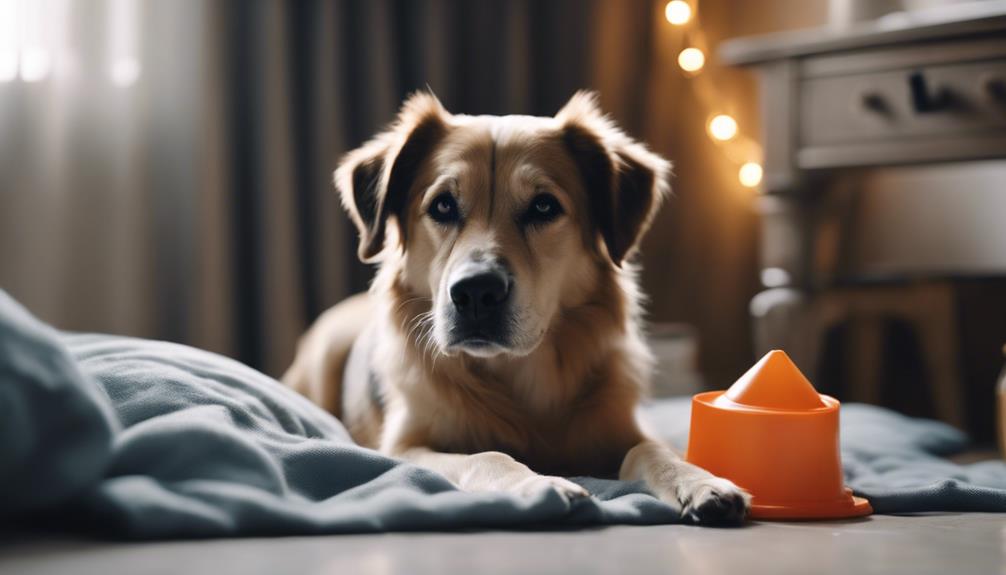
To aid in your dog's smooth recovery post-spay surgery, limiting interactions with others is essential to minimize potential disruptions to the healing process.
During this critical period, it is important to reduce your dog's exposure to other animals and children to prevent any accidental rough play or additional stress on the surgical site.
Physical interactions should be minimized to avoid any unintended injuries or complications that could arise from excessive movement.
By creating a calm and controlled environment with limited external interactions, you can help ensure that your dog's healing process is not compromised.
This focused approach allows your furry friend to rest and recuperate without unnecessary disturbances, ultimately promoting a faster and smoother recovery.
Creating a Calm Healing Environment
In order to optimize your dog's post-spay surgery recovery, establishing a tranquil environment conducive to healing is paramount. Creating a calm healing environment can significantly aid in your dog's recovery process. Here are some ways to achieve this:
- Soft Blankets and Familiar Toys: Surround your dog with familiar items to provide comfort and a sense of security.
- Gentle Music or White Noise: Playing soothing sounds can help reduce stress and promote relaxation during the recovery period.
- Dim Lighting and Peaceful Atmosphere: Keep the environment quiet and peaceful to facilitate rest and healing for your furry companion.
Spoiling Your Dog During Recovery
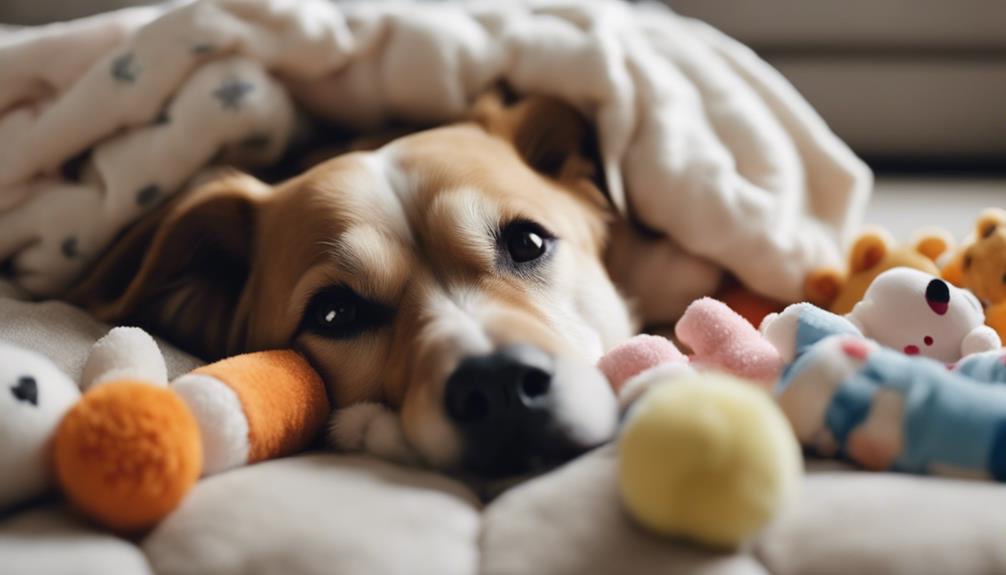
Creating a nurturing environment for your dog's recovery following spaying surgery involves prioritizing comfort and well-being. Spoiling your furry friend during this time can aid in a smoother healing process. Consider providing extra cuddles, gentle belly rubs, and soothing words to reassure your dog.
Offering her favorite treats or toys can help keep her spirits up while she recuperates. Creating a cozy spot with soft bedding and a warm blanket can also enhance her comfort. Remember to keep interactions calm and low-key to prevent any unnecessary stress.
Ensuring Rest and Limited Activity
Following the nurturing environment created for your dog during her recovery from spaying surgery, a key aspect to prioritize is ensuring rest and limited activity. It is crucial to allow your furry friend to heal properly by providing a calm and controlled environment.
Here are some ways to achieve this:
- Create a cozy and quiet space: Set up a comfortable area with your dog's favorite blankets and toys to encourage relaxation.
- Limit playtime and exercise: Avoid strenuous activities that could strain your dog's incision and slow down the healing process.
- Provide gentle affection and attention: Offer soothing pets and cuddles to reassure your dog and promote a sense of security during this recovery period.
Additional Resources for Dog Owners
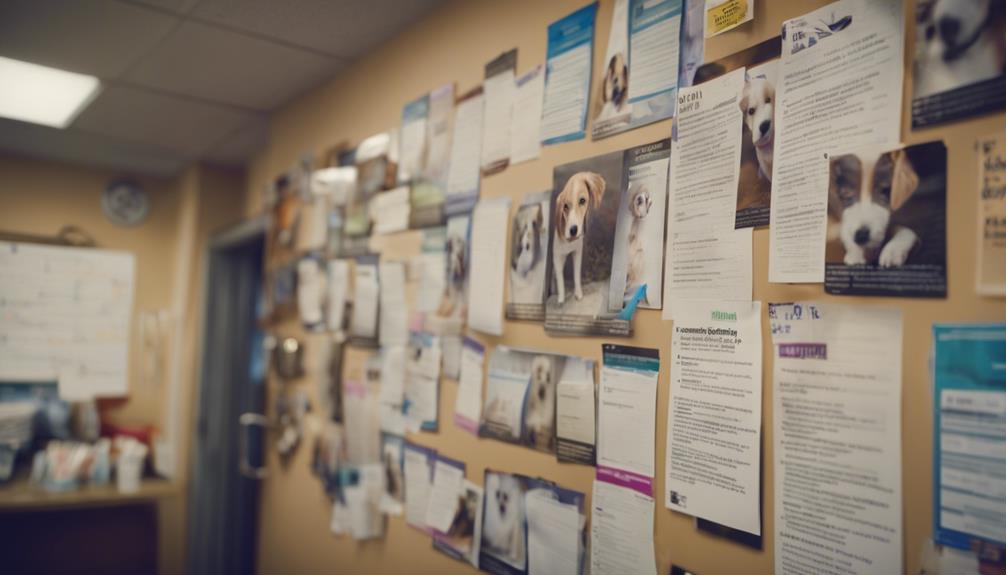
For dog owners seeking further guidance and support beyond the initial spay recovery phase, a comprehensive list of resources is available to address various aspects of canine care and well-being. Additional resources can provide valuable information on topics such as spaying and neutering procedures, anesthesia for dogs, dental care, traveling with pets, and identifying and treating diseases like Cushing's syndrome.
Dog owners can also find guidance on post-operative care, dental cleaning, and managing their pet's heat cycles. These resources aim to educate owners on best practices for ensuring the health and well-being of their furry companions, offering insights into common procedures, potential risks, and proactive care measures to keep dogs happy and healthy throughout their lives.
Conclusion
In conclusion, the post-operative care following a dog spaying procedure is crucial for the well-being and swift recovery of our canine companions. By following vet-recommended aftercare tips, monitoring the incision site, observing behavioral cues, and providing a calm healing environment, pet owners can actively contribute to their dog's healing journey.
It is essential to ensure rest, limit activity, and provide specialized care to help your furry friend recover effectively post-spay surgery.




